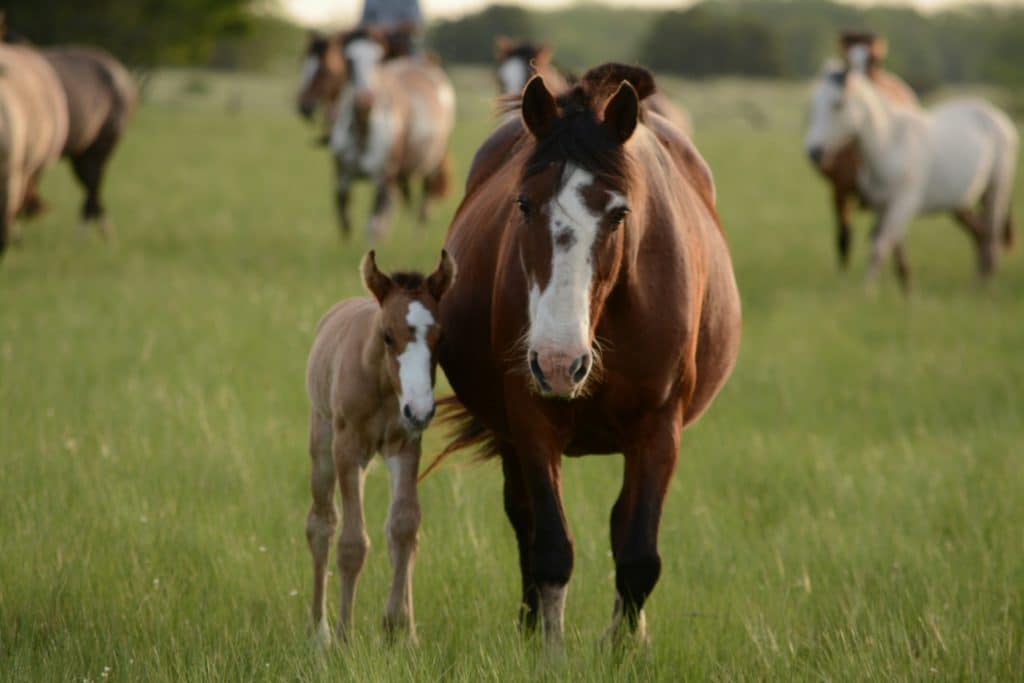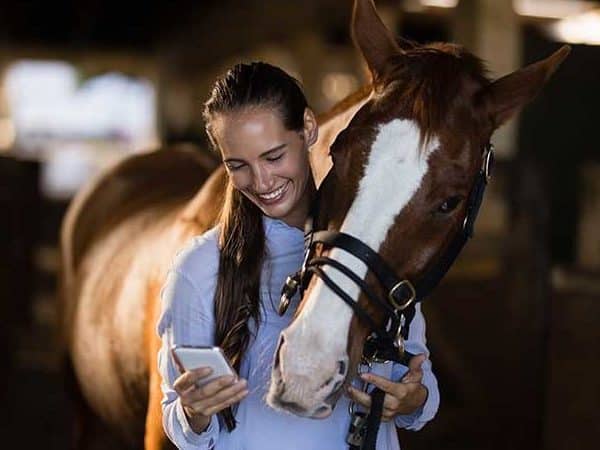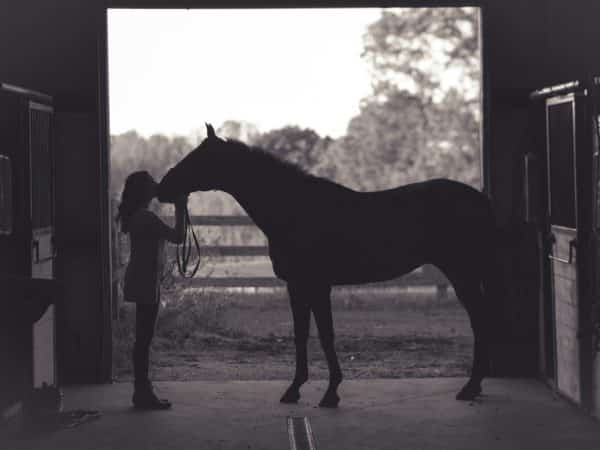
The arrival of foaling season is a mix of anticipation, excitement, and responsibility for horse breeders. Whether you are welcoming a foal for the first time or are a seasoned breeder, each birth is unique and requires meticulous preparation, observation, and special attention to the well-being of the mare and her foal. In this article, we will explore practical steps for successfully navigating the birthing season, as well as our own modern tools that can make the process easier and safer.
Preparation is essential to ensure a smooth foaling process and a healthy start for the foal. Mares typically carry their foals for approximately 11 months (330 days), but it is common for some to go past their due date. It is important to allow the foal time to develop fully, which is why inducing labor should be avoided unless absolutely necessary. Premature births, though less frequent, can also pose significant problems.
Signs of Foaling: How to Know if the Time Has Come?
The first signs (according to the article – “Precursory Signs of Approaching Foaling” by IFCE) of foaling are often subtle but absolutely crucial for ensuring the best birthing conditions. For experienced breeders and novices alike, it is essential to recognize these early indicators that signal the imminent arrival of the foal. Here are the main signs to watch closely for:
Behavioral Changes:
- Increased nervousness and unusual restlessness
- Changes in posture, for example, lying down and getting up more frequently
- Seeking quiet, dark places or isolating from the herd
Physical Signs: Udder development begins 2 to 6 weeks before foaling. Waxing of the teats usually occurs 24 to 48 hours before labor. Mares may also exhibit mild colic symptoms, such as pawing, circling, or turning their head towards their flank. It is important to note that mares can delay foaling if they feel stressed or disturbed, which underscores the importance of calm observation. Mares often foal at night, and constant monitoring can be physically and mentally exhausting. Technology such as a surveillance camera can help alleviate this burden. A camera that tracks behavioral patterns, such as prolonged lying down or restlessness, can alert you with real-time AI notifications of changes that may indicate labor is near, providing peace of mind while ensuring the mare’s well-being.
Tools such as Birth Alarm, which we recommend as part of our trusted product range, can detect when the mare lies down during labor, allowing breeders to be ready in time. Combined with our Coho AI camera, which offers real-time monitoring, breeders can ensure their mares are supported throughout the process without constant physical presence in the stall.
Foaling: Ensuring a Safe Delivery
Foaling generally occurs in three stages:
Stage 1 (Pre-labor): The mare’s uterine contractions begin, helping to position the foal for delivery. This phase can last several hours, during which the mare may appear restless, paw at the ground, or lie down repeatedly.
Stage 2 (Delivery): The foal’s front hooves and nose should appear first. Delivery typically lasts 20 to 30 minutes. If progress stalls or you notice an unusual presentation (e.g., no hooves visible after the water breaks), call your veterinarian immediately.
Stage 3 (Placental Expulsion): The placenta should be expelled within 2 to 3 hours. Check that it is complete and intact; retained fragments can lead to serious complications such as infection or laminitis. If the placenta has not been completely expelled after six hours, consult your veterinarian. Mares prefer to foal in peace, so observe them quietly from a distance. If you must intervene, for example, to clear the foal’s airways if the amniotic sac does not break naturally, remain calm and gentle.
From Birth to First Challenges: The Foal’s Journey
The birth of a foal is exciting, but it can also be a little daunting. Having the right tools and being prepared makes all the difference. The first hours of a foal’s life are particularly crucial and decisive: the young foal must accomplish its first vital tasks, including:
- Standing on its still-fragile legs
- Drinking the precious colostrum, rich in antibodies essential for its survival
- Establishing that unique and indispensable bond with its mother.
However, challenges such as premature births or orphaned foals require increased attention and vigilance. Monitoring the foal’s behavior, including nursing frequency and activity levels, can be crucial in these situations. To monitor the foal’s nursing habits and activity levels without being physically present in the stable at all times, breeders can rely on the timelapse functions of modern smart cameras. These tools allow for a quick review of the first hours, ensuring that the foal is feeding and moving as expected.
Balancing Tradition and Innovation
While traditional observation and preparation remain the cornerstone of foaling season, modern tools can significantly enhance the process. Here are some examples:
Monitoring Systems: Cameras designed for equestrian use and equipped with artificial intelligence technology can provide real-time alerts on changes in mare behavior and help track foal activity after birth.
Birth Alarms: These alarms can detect when a mare lies down during labor, allowing breeders to prepare for the birth. By combining traditional care with innovative technology, breeders can reduce stress and increase the chances of a smooth foaling.
Share Your Experiences
Foaling season is full of anticipation, hard work, and rewarding moments. Each birth of a foal is a promise of the future, an exciting new chapter opening in the history of breeding. These truly magical moments, from the eager anticipation preceding birth to the foal’s first hesitant steps, remind us why so much passion, effort, and dedication are invested daily in the noble art of horse breeding.
Every breeder has their own way of preparing for foaling season. What is your best advice for ensuring a smooth foaling? Share your tips in the comments and inspire other community members.
Do you want to learn more about how Coho can help you during foaling season? Visit our website for more details.


